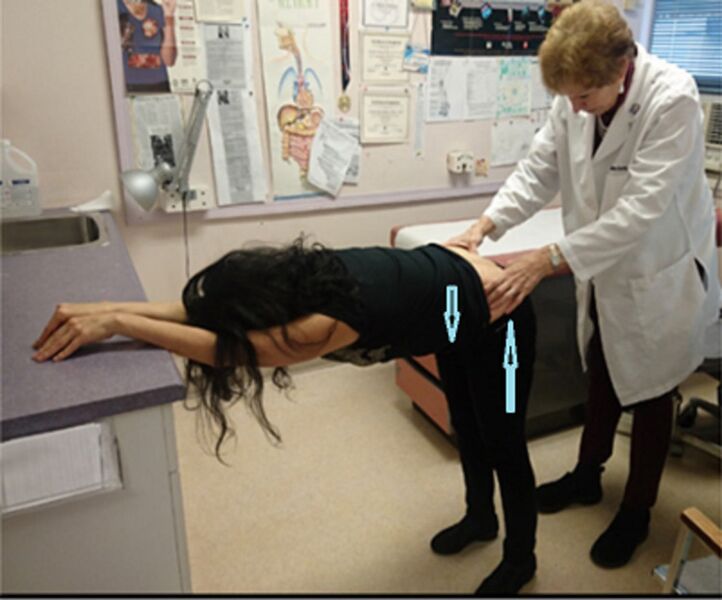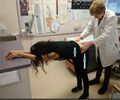File:Sacroiliac Forward Flexion Test.jpg

Original file (750 × 623 pixels, file size: 104 KB, MIME type: image/jpeg)
Summary
Sacroiliac forward flexion test (SIFFT) The patient is leaning against the desk to relax the buttock muscles, making them softer and easier to press down on. The legs push the PSISs up, while the weight of the body brings the spine down, which rotates the sacrum anteriorly making the PSISs easier to feel. PSISs are located by pressing down firmly with the ulnar side of the thumbs while gradually advancing the cephalad toward the PSISs starting on either side of the intergluteal cleft. When the PSISs are reached, bony resistance is felt. For a video demonstration of the SIFFT technique, please refer to Video 1.
The space between the thumb and the underside of each PSIS is marked with a surgical marker. The examiner then asks the participants whether and on which side they feel pain. The examiner then writes the letter B (for before) on the painful side or both sides if they have pain on both sides.
In those with obesity or very muscular participants, ultrasound can be used to determine the PSIS levels.
Bertrand, Helene et al. “Self-Treatment of Chronic Low Back Pain Based on a Rapid and Objective Sacroiliac Asymmetry Test: A Pilot Study.” Cureus vol. 13,11 e19483. 11 Nov. 2021, doi:10.7759/cureus.19483
Licencing
This work is licensed under a Creative Commons Attribution 4.0 International License.
File history
Click on a date/time to view the file as it appeared at that time.
| Date/Time | Thumbnail | Dimensions | User | Comment | |
|---|---|---|---|---|---|
| current | 12:10, 18 December 2021 |  | 750 × 623 (104 KB) | Jeremy (talk | contribs) | Sacroiliac forward flexion test (SIFFT) The patient is leaning against the desk to relax the buttock muscles, making them softer and easier to press down on. The legs push the PSISs up, while the weight of the body brings the spine down, which rotates the sacrum anteriorly making the PSISs easier to feel. PSISs are located by pressing down firmly with the ulnar side of the thumbs while gradually advancing the cephalad toward the PSISs starting on either side of the intergluteal cleft. When th... |
You cannot overwrite this file.
File usage
The following page uses this file:

